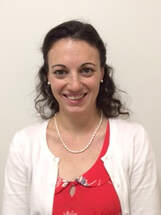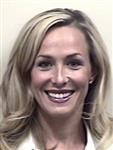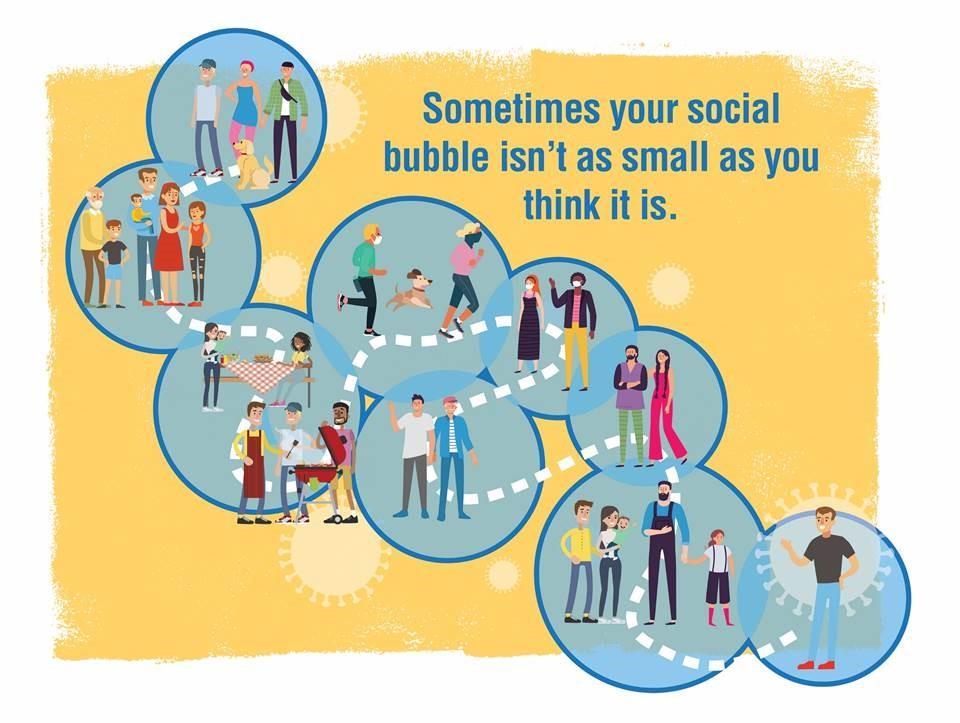Sign up for insights into DHSS's COVID-19 response
Subscribe to DHSS Insights for behind-the-scenes news about Alaska’s COVID-19 response and other efforts to protect the health and well-being of Alaskans. Stay strong, be safe, protect yourself and others. Together we can stay on top of COVID!
Resource highlights from DHSS's COVID-19 website
Alaskans Can Slow the Spread of COVID-19
Answer the Call and Keep Circles Small
As we head into winter, with our cases rising and everyone about to spend more time indoors where we know the virus can more easily spread, Alaskans need to make extra efforts to crush the curve of COVID-19. Keeping our social circles small is critical. Answering the call from a contact tracer is just as important if you or someone close to you tests positive for the virus. And even before you receive a call from a contact tracer, you can help by calling your own close contacts.
COVID-19 is highly infectious. The best way to prevent the virus from spreading widely is to isolate people as quickly as possible while they’re still contagious. To do that, we must rapidly identify people who have been exposed to the virus through close contact with someone who tests positive. Prompt notification helps prevent those contacts from further exposing and infecting others. This process is called contact tracing.
If you test positive for COVID-19, rest assured that there is support for you. Your first priority is to isolate yourself from others so you don't further spread the virus. Next, quickly let your close contacts know that they may have been exposed to the virus. There’s no shame in having tested positive. By working together and notifying close contacts, we can interrupt the virus from spreading further. This flyer explains how to take quick action to take care of yourself and make a list of those who have been close to you.
You will likely also receive a call from a public health contact tracer who will offer medical advice and support. If you haven't already done so, they will help you to identify people who were six feet or closer to you for over 15 minutes cumulatively within a 24 hour period who may have been exposed to the virus. They may leave a message asking you to call them back, so please listen to your messages.
Contact tracing effectiveness
Researchers at University of Alaska Anchorage have calculated that the number of exposed people, and the speed at which people take action to isolate and quarantine, have a profound effect on how widely the virus will spread. They forecast in September that more than 26 times fewer Alaskans would get COVID-19 in the next year if more people infected with the virus isolate themselves to stop the spread of COVID-19. They also calculated that delaying isolation by just two days would result in over 100,000 more Alaskans infected with COVID-19 cases in the next 12 months. The quicker people who’ve been exposed are able to isolate, the more Alaskans we will save. Don’t wait, isolate! (September 2020 COVID Tracer Analyses for the State of Alaska, Katie Cueva ScD MAT MPH, Lisa Bulkow MS, Elaina Milton).
To be most effective, those who have been infected need to cooperate with contact tracers by providing information on close contacts. Both contact tracers and those who have tested positive generally report positive experiences with this important process.
A contact tracer’s perspective

April Rezendes, a registered nurse with the Juneau Public Health Center, comments that Alaskans have been very helpful in responding to calls about exposure to the virus. Often, people who test positive have already notified their close contacts to let them know they have been exposed. The Division of Public Health has created a new testing flyer with a do-it-yourself contact tracing sheet. If you test positive, Public Health recommends you fill out that contact tracing sheet, notify your close contacts and then relay that information to the contact tracer when they call. Your information is kept confidential but this allows contact tracers to contact people to let them know they have been exposed.
Rezendes provides one-on-one education for those who test positive and their contacts. She treats each case as an individual and walks people through their personal scenario. Every person has their own needs to manage the required isolation or quarantine and their own ability to remember close contacts. In some cases, people remain sick for a very long time. Rezendes calls back every few days so they know someone cares and is looking out for them.
She was impressed by the Juneau community response in stemming a COVID-19 outbreak. The city advised that bar patrons get tested after COVID-19 cases were linked to a wedding in late August attended by several people who work at local bars. The city and fire department then quickly created a pop-up testing site to accommodate hundreds of people who came forward to get tested.
She emphasizes that getting exposed people into quarantine quickly makes a huge difference in limiting the spread in the community. The actions of every individual collectively make a big difference, including being aware of keeping your distance and limiting your close contacts.
Alaskans’ willingness to help, and the importance of keeping the spread contained, was echoed by Rhonda Johnson of Anchorage, a retired public health professor who has signed on as a contact tracer. She finds most people she contacts are “cooperative and curious.” People often thank her when she checks back in on them. She adds that timing matters when identifying close contacts. This helps identify both those who may have been exposed and, potentially, the original source of the infection.
Your family’s actions keep communities open and safe
|

By isolating infected and exposed individuals, contact tracing makes it possible to keep communities open. Dr. Meghan Lindstrom, an emergency room doctor at Mat-Su Regional Medical Center, recently shared with educators her family’s experience when her third-grade daughter was asked to quarantine after being exposed as a close contact at Machetanz Elementary School. She described her emotions after getting the call that her daughter was exposed in class as, “Not the news I wanted to hear.”
But, she emphasized the she had a “really positive experience” working with the school nurse who was upbeat, gave excellent information, and made her feel very empowered as a parent. “I really felt like I was in it with her,” added Dr. Lindstrom, especially since the nurse also had a daughter in the quarantined class.
The quarantine was inconvenient, but Dr. Lindstrom tried her best to put a positive spin on it. “We needed to show everyone that this is doable. It’s an inconvenience, it’s not fun, but really we’re winning, because the rest of the school is able to remain open, my other daughter can go to school, and I am able to go to work.”
|
Keep bubbles small (truly small)
Often, Alaskans ask if our rise in cases is due to several large outbreaks, or super spreader events. Outbreaks certainly play a role but so do small social circles – friends and family. One observation from contact tracers is that people often think they are doing a good job keeping their social circles small, but they don’t realize how our bubbles may be connected by people who move between bubbles.
 We all have a need to be social, but we need to be as creative as possible about staying connected with friends and family in a safe manner until we have a COVID-19 vaccine.
Joey Caterinichio is a sports coach and medical care company owner who advises on COVID-19 mitigation plans. She emphasizes the need to keep social bubbles small and to not let our guard down. Caterinichio advises teams to trace every day where athletes have been and who is in their bubble. “Knowing where the athletes are and who they’ve been with is actually very important.” Keeping masks on and keeping distance saves from quarantining an entire team if someone tests positive.
Caterinichio shared her personal story of how keeping track of contacts prevented having to quarantine an entire team. “Just when I thought I was an expert,” she shared, one of her colleagues tested positive. Because they had carefully documented who the athlete had been around, they were able to very quickly trace the contacts and the remainder of the team was able to continue competing.
Contact tracing has been used for a long time. It helped to contain the spread of smallpox and typhoid. Today, contact tracing is regularly used to slow the spread of other infectious diseases such as tuberculosis and now COVID-19.
So, if you get a call from a public health worker identifying themselves as a contact tracer, please answer the call! The information you give and receive will be kept confidential and will be invaluable to you, your family and your community.
More tips from DHSS Insights
|